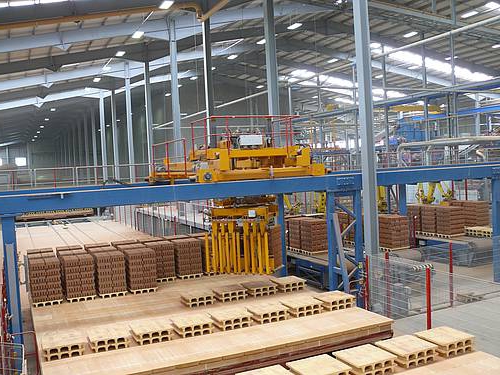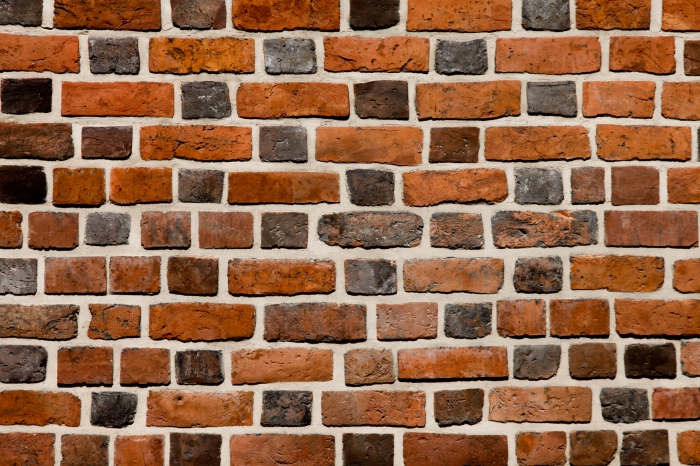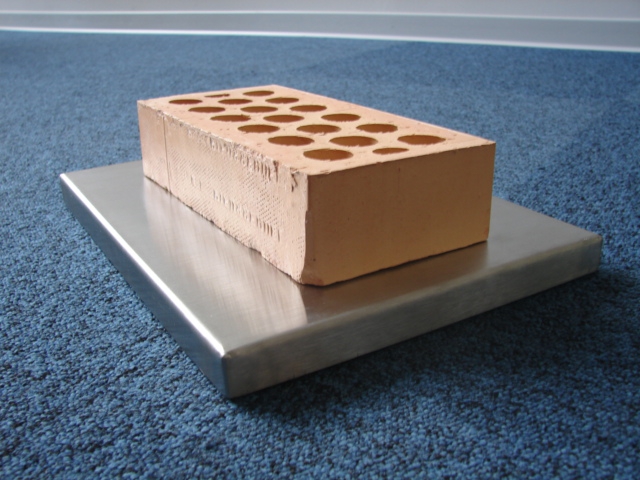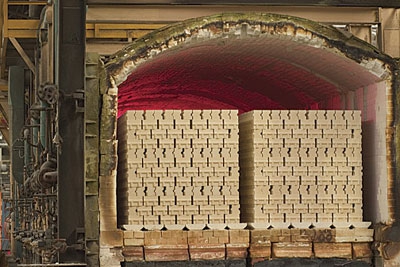The modern domestic building materials market is represented by a wide range, but this does not stop entrepreneurs from starting the production of this or that material. After all, the need for this product was, is and will be. In this article, we will consider the idea of making ceramic bricks.
This product is always in high demand, regardless of the season, so there is no doubt that such an activity will be a fairly profitable activity. Huge amounts of money will be required to open the plant, but first you should try to organize a production workshop.

General information
This type of production is very resource- and labor-intensive, it requires a large initial investment. This is because the equipment for the production of ceramic bricks consists of 27 industrial units, and each of them is expensive.
In addition to acquiring the line, large investments in premises will be required not only for installation, but also for storage and warehousing of finished products. However, despite considerable costs, this type of production is characterized by a short payback period, and finished products are in high demand both among large construction companies and among individuals.
Types of bricks
Ceramic brick (regular, red) is made from clay, and to add special properties to the composition, various additives are introduced. According to their application, this building material is usually divided into three types: front, special and ordinary (ordinary). The latter type is used for the construction of load-bearing walls, internal partitions and other structures.
For facing work, it is customary to use front brick, since it has a better surface of faces compared to other types. A brick of a special type can be painted in any color and have an additional texture of one or two faces.

What brand 100 means
This article describes the technology for the production of ceramic bricks of brand 100. Let's look at what this term means. Brick produced in our country can correspond to the following brands: M-75, M-100, M-125 and up to M-300. The letter "M" means "brand", that is, an indicator of strength.
The number that stands next to it corresponds to the number of kilograms of load per square centimeter that this material can withstand when compressed. Ceramic brick (GOST 530-2007) of brand 100 is in great demand among most construction companies, it is one of the best-selling building materials.
Description of production technologies
The technology for the production of ceramic bricks implies two methods for its manufacture. The first is a method of plastic formation, and the second is a dry or semi-dry formation. The latter of them is not very popular, since the final product can vary greatly in density.
The technological scheme for the production of ceramic bricks by the plastic method consists of four stages: preparing the clay mass, molding the raw material, drying and firing it. At the first stage, the raw materials are crushed (the obtained fraction is one millimeter) and foreign inclusions are removed. At the same time, clay for the production of ceramic bricks can have up to 33 percent of various impurities.
The humidity indicator should be 20 percent.At the stage of formation in special equipment, the raw materials for the production of ceramic bricks are moistened, and all necessary additives and impurities are introduced into it. Raw moisture is 25 percent. Next, a special beam is formed from the resulting mixture and cut into a conveyor belt. For complete drying, the resulting raw materials are exposed to high temperature. Its level is slowly raised to one hundred and fifty degrees, after which the humidity of the product does not exceed ten percent.
At the final stage of the technological process, raw material is fired. To do this, it is placed in a special oven. The temperature here slowly rises to eight hundred degrees. In order for the brick not to crack, its cooling should be carried out gradually. After that, the resulting building material is subject to storage.

Economic comparison of different production technologies
The method of plastic formation described above is the most expensive. It will require significant investments at the development stage, depending on the chosen installation, the amount of financial investments can reach the mark of three million dollars.
The second technology for the production of ceramic bricks (dry formation) is the oldest, but it has a big drawback - it does not allow to produce a large number of products. In terms of volume, it can only satisfy a small or medium-sized enterprise. The cost part will be only about 20 thousand dollars.
However, recently in our country, a new method of manufacturing ceramic bricks was introduced - by the method of hyperpressing. Despite the novelty, domestic entrepreneurs have already been able to positively evaluate it, because, at relatively low costs, it allows you to produce high-quality products. For the organization of such production will need about a hundred thousand dollars.

Requirements for Production Facilities
A room for a brick production line should have an area of at least five hundred square meters. Ceilings must be at least five meters high. The workshop must be divided into three zones: production site, warehouses for consumables and finished products.
The big advantage is that there is no need to connect to the sewer. This will help to save on rental space. Equipment for the production of ceramic bricks must be selected depending on the manufacturing method you use and the maximum capacity of the installation. The higher the line power, the more expensive it will cost you.
Ceramic Brick Production Line
The installation for the production of this building material should include the following mechanisms: multi-line cutting machines with side and vertical cuts, brick stackers for cantilever trolleys, automated lines for cutting and transport and packing operations for chamber technology for drying products, unloaders for drying trolleys, automatic cages, power transmission trolleys for tunnel dryers with forklift, transmission bridges, drying trolleys, mouthpieces of the production line, suspension iron separators. Consider the purpose of some of these devices.

Multi-String Cutting Machines
These mechanisms are designed for stable high-precision cutting of clay beams that come out of the belt press. The dimensions of a single ceramic brick are 250x120x65 cm. The machine is equipped with an automatic process control system based on electronic processor technology and proximity sensors, controlled by one operator.
In addition, the installation is equipped with a bevel cutting device. Consists of mechanisms for cutting a measured beam, feeding frames, multi-jet cutting, control panel. The productivity of this machine is 8000 pieces of raw brick.
Stacking machines
This line is designed to automate the process when loading products onto drying trolleys. It is controlled by one operator. The machine consists of: feed roller, hoist, reducer, pusher and trolley feeder, turntable. The plant capacity is 8000 bricks per hour. Dimensions of the complex - 6550x7500x3200 cm, drying frame - 1130x180x40 cm. Weight - no more than four tons.
Automated lines for cutting and handling procedures with raw brick
The line is designed for laying and transporting products into the drying chamber. Attendants - two people. The installation includes: a multi-string automatic machine, a loading and unloading section of technological equipment, as well as its packaging, a conveyor, a control system, an electric transmission trolley equipped with a fork truck. The productivity of the line is 8000 pieces of conventional brick per hour. One cassette holds up to 48 units of product. The mass of the installation is twelve tons.
Environmental protection
In organizing this production, natural gas is used in a tunnel kiln and dryer for brick firing. However, combustion products contain highly harmful substances such as NO2 and CO. They are removed along with smoke and have a negative effect on the human body. As a result, workers may experience frequent headaches, nausea, and even death at high concentrations. To reduce the effect of combustion products on the human body, an exhaust gas afterburner should be equipped.

Business features
After you select the right room and purchase the necessary equipment for the production of ceramic bricks, you will need to establish a line. The production technology of this building material for its proper functioning will require at least five workers. Despite the fact that the installation is semi-automatic, there is enough work for everyone.
The success of this business lies not only in the streamlined production process of finished products, but in its quick implementation. Due to the fact that the domestic market of building materials is growing every year, we can count on an influx of regular customers - it can be private individuals, wholesale companies, construction supermarkets, construction companies, etc. With good organization and well-established work, stable income is such a business. will begin to bring after the first month.








